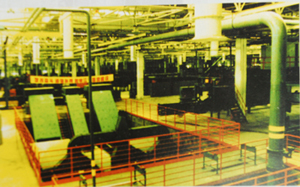
The oil then flows into a manifold, which distributes the oil through drilled holes to the crankshaft and other bearings throughout the engine. Oil flows from the main bearing to the lower connecting rod bearing through a hole drilled in the crankshaft.
The oil reaches the hollow camshaft (in an inline or opposed engine) or the cam plate or cam drum (in a radial engine) through a connection with the end bearing or main oil manifold; it then flows to the camshaft, cam Drum or cam plate bearings and cams.
The engine cylinder surfaces receive oil sprayed from the crankshaft and crankpin bearings. Because the oil slowly seeps in through the small crankpin gaps before being sprayed onto the cylinder wall, it takes a while for the best oil to reach the cylinder wall, especially in cold weather when the oil flow is slow. This is one of the main reasons to use modern multi-viscosity oils that flow well at low temperatures.

When circulating oil performs itsDry thin oil lubricationand its function of cooling the moving parts of the engine, it drains into the oil sump in the lower part of the engine. The oil that collects in these oil pans, once it accumulates, is collected by the gear or cycloidal scavenger pump. These pumps have larger capacities than pressure pumps. This is needed because the oil usually increases in volume due to foaming (mixing with air). On a dry sump engine, this oil leaves the engine, passes through the oil cooler, and returns to the oil supply tank.
Address: No. 010, Xinglong Road, Huilong Industrial Park, Qidong City
Sales hotline: 0513-83637668
Company fax: 0513-83637098
After-sales service: 0513-83635700
Website: delcan.cn
E-mail:qd3637668@163.com

Scan to learn more